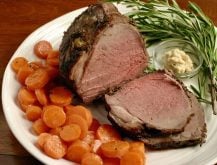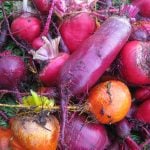I lament the fact that we get only 90 frost-free days in our area. According to the 2009 Farmer’s Almanac, we were slated to receive our last frost June 5 and our first on Aug. 29 – 84 frost-free days in all. They were wrong. We received our last frost June 7.
It was all chuckles and grins until we got another frost on June 26, followed by an additional lick Aug. 13. That amounts to a whopping run of 48 frost-free days. Suddenly 84 frost free days sound like watermelon weather.
Read Also

Rural Manitoba resources slim on natural disaster planning
A study from Brandon University’s Rural Development Institute has found that many rural and small municipalities don’t have the staff or resources to make formal climate plans against natural disaster.
I lost all my beans, tomatoes and most of my squash to the August frost. The tips of my potato plants are crinkled up and have turned various shades of brown, but are still producing.
Next year, and gardening is always about next year, I am going to get a roll of Reemay and have it ready to anchor over the garden rows whenever frost threatens.
After doing a bit of research, I discovered there are different weights of Reemay that offer different degrees of protection.
Lightweight – 0.3 ounces per
sq. yard. Light transmission: 90 percent. Frost protection rating: poor.
Mid Weight – 0.5 – 0.6 oz. per sq. yard. Light transmission: 85 percent. Frost protection rating: four degrees.
Heavy Weight – 0.9 oz. per sq. yard. Light transmission: 70 percent. Frost protection: four to six degrees.
Extra Heavy Weight – 1.5 oz. per sq. yard. Light transmission: 50 percent. Frost protection: six degrees.
The heavier stuff is best for temporary use as frost protection.
The lightweight cloth has next to no insulation value but lets in the most light and would work best for leaving on rows for longer lengths of time for protection against things like cabbage moths.
If there’s anything worse than going out to your garden in the middle of summer to find plants limp from frost’s kiss, it has to be sitting down for a feast and finding green worms in your broccoli. Except of course finding half a
green worm in your broccoli.
Despite all the setbacks, I have been busy with the summer harvest. I have blanched and frozen dozens of batches of Swiss chard. Not only does it taste great, but it thrives in all kinds of weather.
My grown son, home for a visit, observed my chard harvest with horror. He suggested I was only pretending to like it because it was the most prolific thing in my garden this year. He claims anything that tastes that awful has to be poisonous. All the more for me was my cheerful response as I wolfed down a raw leaf, causing him to gag and flee the kitchen altogether.
Blanching can be time consuming, but thank goodness for freezers. Canning is a lot more trouble. A lot of things you don’t even need to blanch. I spread freshly shelled peas on a cookie sheet, pop in the freezer for an hour or so and then pour the frozen peas into ice cream buckets until full. This method keeps the peas from freezing together in a lump and allows me to scoop out what I want over the winter. This method works great for freezing berries too.
Tomatoes are another item that freezes well in the raw. Roma tomatoes work best since they are the least pulpy. I simply put them whole into a freezer bag, seal and toss them in the freezer. Preparation couldn’t be simpler. When I want to add tomatoes to a chili, stew or spaghetti sauce, I rinse them under hot water until their skins slide off, and then chop them up and throw them into the pot.
This year, I’m going to have to buy some tomatoes since all of mine froze before I could freeze them. That’s kind of ironic when you think about it.
Shannon McKinnon grows herbs, vegetables, wildflowers and more on her 60 acre farm northwest of Dawson Creek, B.C. She can be reached at shannon.mckinnon@producer.com














